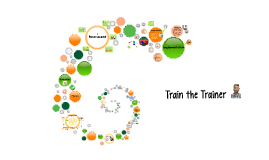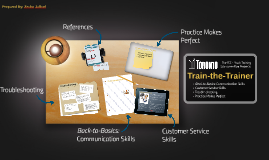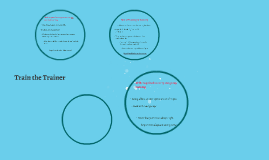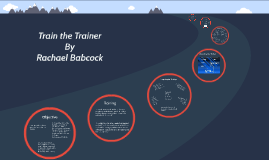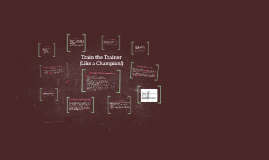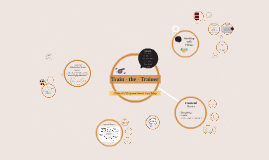Train the Trainer
Transcript: Train the Trainer By Rachael Babcock An in house training program with the necessary room space to accommodate approximately 20 trainees Trainer A vivid, dramatic and exciting learning experience is more likely to be remembered A well arranged room for easy access by the trainees The objective is to build a pool of competent and qualified trainers who are recruited from staff within the organization, service sectors, advocacy groups and other organizations and interested parties 1. If the participants are self directing individuals, to better motivate them give the training in a way that is meaningful and relevant to them A well prepared lecture and interactive session Michael Armstrong, A Handbook of Personnel Management Practice, reproduced in Personnel in Practice, Currie, Donald: Blackwell Business (Oxford, UK); 1997 Noe, R. (n.d.). Bookshelf Online. Retrieved August 07, 2016, from https://ambassadored.vitalsource.com/#/books/1259766268/cfi/6/2[;vnd.vst.idref=body001] Knowles, M. S. 'Andragogy: Adult Learning Theory In Perspective'. Community College Review 5.3 (1978): 9-20. Web. Objective 2. If the trainees are adult learners they learn differently then children wold learn. Communication material needs to be passed our to all trainees Trial and error - by trying for themselves. Being told -by receiving direct instruction, either orally, or in writing. Imitation - by copying the actions of another person, usually an instructor or a skilled person. Thinking - by organizing one's thoughts about a topic or problem to arrive at an explanation or solution Choosing the Trainer 5. Law of intensity Case studies would be a very effective training plan for these individuals. If a good case is discussed starting from how a particular object of training and learning is to be done and the audience is taken through the various stages of the actual scenario it makes the entire subject come to life and the participants are more likely to remember it. A train the trainer model will be used to assist participants to develop & expand their skills to conduct effective trainings that are specifically related to fulfill the need Trainer Adult learners tend to learn best when they are actively involved in determining what, how, and when. Adults learners feel that the process is more important than the content. Thus, how it is taught is relatively more important than what is being taught 4. Allowing enough time to practice the learning during the training program 6. Ways of learning 8. Assessments The trainer has a significant role in facilitating the learning process and, to make it more effective, they should take into consideration the following factors: 3. The needs of the trainees, meaningful associations between the new material and the familiar learning. Overall goal is to modify or teach a trainee a behavior. Treat all trainee's participating in the learning event as individuals Recognize the differences in their knowledge, skills and attitudes. Provide sufficient time for each individual to achieve success. Create a learning environment that is pleasant, well organized, and free from anxiety as to make it comfortable for the trainee to participate in learning activities designed to bring about the required changes in behavior at work Use assessment to: Determine whether the trainee has acquired the proposed knowledge, skills and attitudes. Determine whether the trainee is now able to perform the task, as per the specified standard. Asking the trainee to comment on the value of the newly acquired expertise in relation to performance of the task and to his or her job in general An overhead projector or any other necessary multimedia tools 7. Structure of the program References: 1. Gain practical, and how to overview of entire training function Necessary writing material, including a post training questionare Learning proceeds smoothly, if we move from the Known to the Unknown. The information should be sequenced so that it proceeds from the simple to the complex. Learning is an active and voluntary process. Involvement enhances learning, as it inspires the learner to retain the information. 2. Through modeling of the best practices and latest techniques in training delivery, trainers can discover the 4ps of training: Purpose & assessments, Planning & preparation, Presentation & facilitation, Performance & Evaluation 3. New trainers will gain a strong foundation in critical training skills and seasoned trainers will be introduced to new approaches for delivering powerful training Preparing for Training Allow time for assimilation, testing, acceptance and internalization. Success is a great motivator . Hence, learning is facilitated by knowledge of results, Allow time for feedback to the trainee on their learning. The feedback should be immediate. Training






